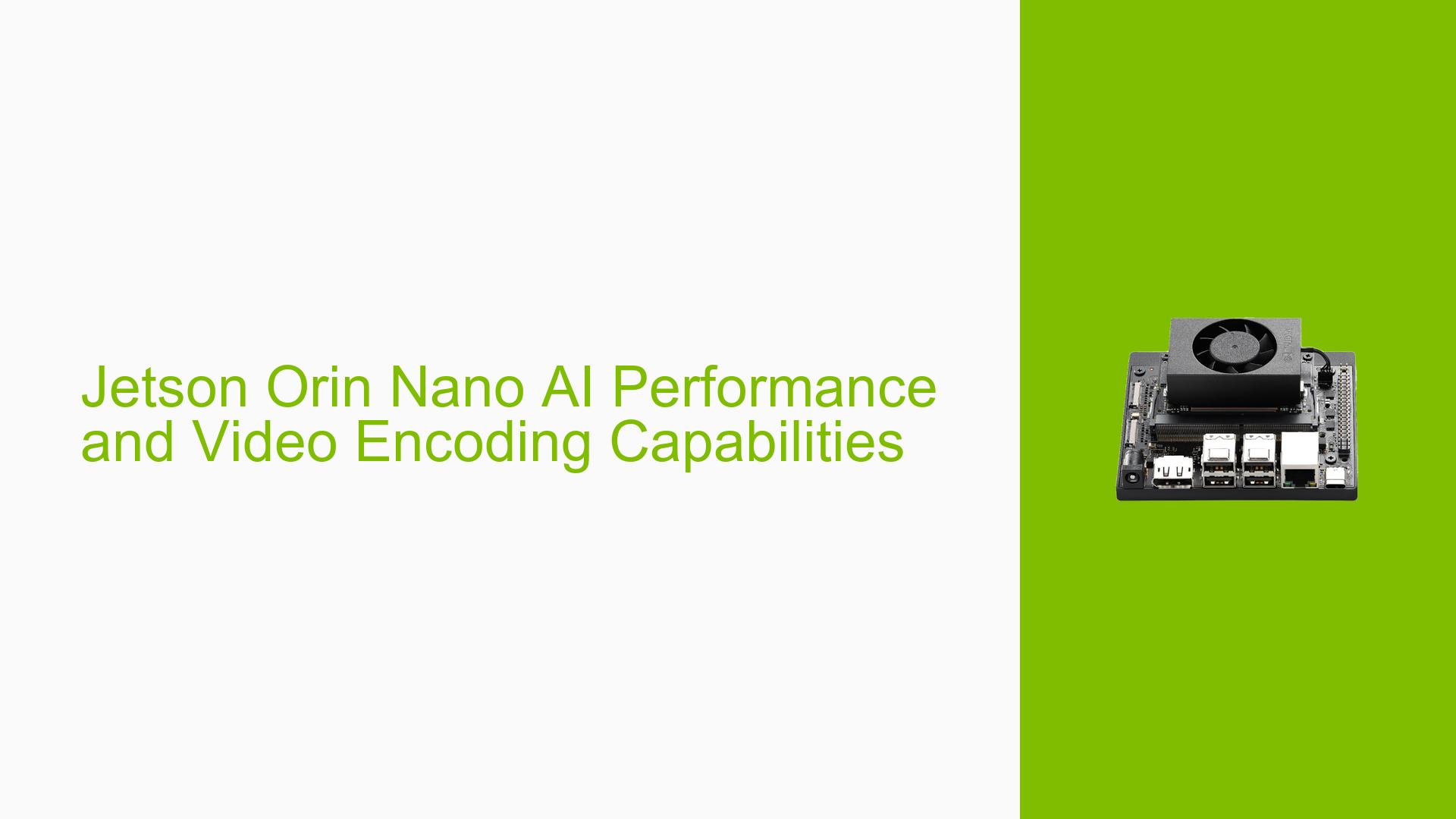Jetson Orin Nano AI Performance and Video Encoding Capabilities
Issue Overview
The Jetson Orin Nano, a new product in NVIDIA’s lineup of AI-focused embedded systems, has sparked interest among developers working on vision-based solutions for autonomous mobile robots. However, there are questions regarding its AI performance capabilities and video encoding support. Specifically, users are concerned about:
- The absence of dedicated DL (Deep Learning) and Vision Accelerators
- The method by which the device achieves its reported high TOPS (Trillion Operations Per Second) in AI performance
- The limitations of video encoding capabilities, particularly for 4K resolution
- The number of 1080p encoding streams the device can support
These issues are crucial for developers looking to implement vision-based solutions in autonomous mobile robots, as they directly impact the system’s performance and capabilities.
Possible Causes
-
Hardware Architecture: The Jetson Orin Nano’s architecture may differ from previous models, potentially utilizing CPU cores or other components for AI acceleration instead of dedicated DL and Vision Accelerators.
-
Marketing Terminology: The reported high TOPS might be achieved through a combination of different processing units rather than dedicated accelerators, leading to confusion among users.
-
Hardware Limitations: The absence of hardware encoding support could be due to cost-cutting measures or design choices made to position the Orin Nano in a specific market segment.
-
Software Optimization: The AI performance might rely heavily on software optimizations rather than dedicated hardware, which could explain the high TOPS without specific accelerators.
-
Product Differentiation: NVIDIA may have intentionally limited certain features, such as 4K encoding, to differentiate the Orin Nano from higher-end models in the Jetson lineup.
Troubleshooting Steps, Solutions & Fixes
-
Understand AI Performance Metrics:
- Research NVIDIA’s documentation to understand how TOPS are calculated for the Orin Nano.
- Compare the Orin Nano’s performance with other Jetson models using standardized benchmarks.
-
Verify AI Capabilities:
- Test the Orin Nano with various AI workloads to assess its real-world performance.
- Use NVIDIA’s official AI benchmarking tools to measure the device’s capabilities accurately.
-
Assess Video Encoding Limitations:
- Confirm that 4K encoding is not supported on the Orin Nano.
- Test 1080p encoding capabilities:
# Example command to test video encoding (replace with actual NVIDIA SDK commands) nvenc_test --input input_video.mp4 --output output_video.mp4 --codec h264 --preset slow --bitrate 5M - Gradually increase the number of simultaneous 1080p encoding streams to determine the device’s limits.
-
Optimize for Available Resources:
- Allocate CPU cores efficiently for video encoding tasks.
- Consider using software encoding libraries optimized for ARM processors if hardware encoding is insufficient.
-
Explore Alternative Solutions:
- If 4K encoding is crucial, consider using a higher-end Jetson model or external encoding hardware.
- For AI tasks, investigate software frameworks that can efficiently utilize the available CPU and GPU resources on the Orin Nano.
-
Stay Updated:
- Regularly check for NVIDIA software updates and new JetPack releases that might improve performance or add features.
- Monitor the NVIDIA Developer Forums for community-driven solutions and workarounds.
-
Consult NVIDIA Support:
- If performance issues persist or clarification is needed, contact NVIDIA support or post detailed questions on the official developer forums.
-
Consider Hardware Alternatives:
- If the Orin Nano’s capabilities do not meet your project requirements, evaluate other Jetson models or competing embedded AI platforms that offer the necessary features.
-
Optimize Workloads:
- For AI tasks, focus on model optimization techniques like quantization and pruning to improve performance on the available hardware.
- For video encoding, consider pre-processing steps to reduce the encoding workload, such as frame rate reduction or resolution scaling.
By following these steps and understanding the Jetson Orin Nano’s capabilities and limitations, developers can make informed decisions about its suitability for their autonomous mobile robot projects and optimize their applications accordingly.
